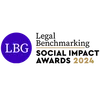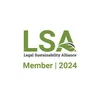On 2 March 2023, the UK Supreme Court heard the arguments of both sides (Stephen L Thaler and the UKIPO) on the matter of AI inventorship in the latest episode of the much discussed DABUS family of cases.
What are the DABUS family cases?#
DABUS (Device for the Autonomous Bootstrapping of Unified Sentience) is an artificial intelligence (AI) system. Patent applications have been filed which have sought to name DABUS as an inventor, which has opened up the question of whether an inventor needs to be a person. Following on from an English Court of Appeal decision which answered this question in the affirmative, it was then appealed to the Supreme Court where it was heard earlier this year.
The questions at issue before the UK Supreme Court are:
a) Does section 13(2)(a) of the Patents Act 1977 require a person to be named as the inventor in all cases, including where the applicant believes the invention was created by an AI machine in the absence of a traditional human inventor?
b) Does the Patents Act 1977 provide for the grant of a patent without a named human inventor?
c) In the case of an invention made by an AI machine, is the owner, creator and user of that AI machine entitled to the grant of a patent for that invention?
We are yet to hear the outcome of the hearing but it is hoped that whatever the outcome, some insight into how to address perceived AI inventorship will be provided. We did discuss this in a previous note where we encouraged innovators to look at the user and applicant contributions when it came to addressing inventorship where they believed it came from an AI.
How about other countries?#
This matter has also been heard in various guises before courts in Australia, Germany, Israel, New Zealand, South Africa, South Korea and the US (in addition to the EPO) and the message has been almost wholly negative about the concept of AI inventorship. That is to say, only South Africa has granted Dr Thaler’s patent with an AI inventor with the rest almost insisting that an inventor must be a natural person.
What are we expecting from the UK Supreme Court?#
It is difficult to predict exactly what the UK Supreme Court will do but it is hard to imagine them differing substantially from the EPO and the US who have both insisted that an inventor must be a natural person.
This may well be disappointing for innovators who believe that they have an AI inventor on one of their patent applications. However, it is imperative that those organisations use the DABUS case as a cautionary tale in how expensive and time consuming changing the status quo can be.
But what can organisations do?#
Persisting with patent applications with an AI inventor will likely lead to problems. Even if the UK Supreme Court does acknowledge the possibility of AI inventors, the other patent offices across the planet have been very firm in their rejection of this concept.
The first step is to seriously consider whether patent applications are right for the protection of the invention. Patents are a strong form of protection for technical concepts, but they are also expensive and offices across the world will insist that you name a human inventor. There are other intellectual property rights which can be considered, but as to which one is a useful option really depends on the unique selling point (USP) of the technology/concept which is being protected.
If patent applications are the best intellectual property right to pursue, then our advice would be to consider the person who configured or led the training of the AI which has produced the inventive concept. They are most likely to have provided the input leading to the inventive configuration which, in the view of the UKIPO, would make them an inventor.
Other IP rights should, however, be considered in addition to or as an alternative to patents.
Trade secrets are one option, especially for protecting specific mixtures or compounds or even processes involving specific mixtures or compounds. That said, trade secrets can be very difficult to prove and maintain but they can be maintained for a very long period of time, e.g. Kentucky Fried Chicken’s blend of herbs and spices.
If the invention relates to a physical product then the aesthetic aspects could be protected with design or copyright. Registered designs are relatively cheap to obtain, although they only protect aesthetic aspects of a product and not functionality. Copyright does not require registration in the UK but it can be limited in that successful infringement proceedings would require proof of copying.
Moving forward#
It remains to be seen what the UK Supreme Court will come up with in regard to the questions which have been put to them, but the view across the world of this matter means that caution should be taken before trying to insist on the presence of an AI inventor in a patent application.
Please reach out to your usual Murgitroyd contact if you have any questions on this matter. Alternatively, if you’re not an existing client, please get in touch via our contact us page.





















